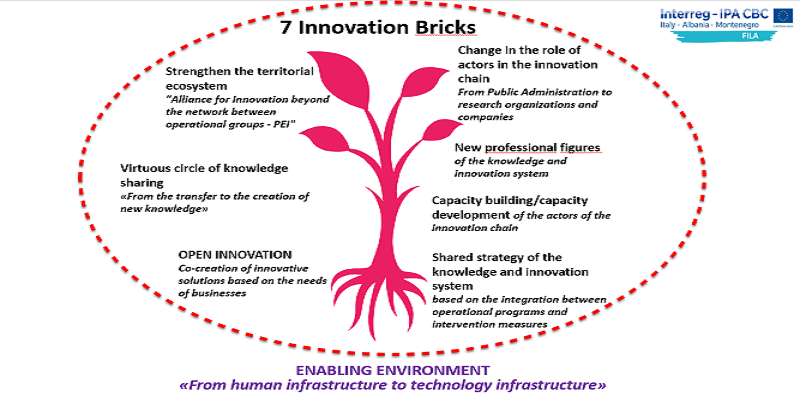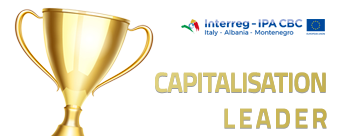
First project output foresees the definition of a new FILA model.
FILA LAB model has been drafted according to a bottom-up collaborative and participatory methodologies, which include the mapping of 50 Innovation Support Organizations, best practices at the international level and the analysis of 50 Operational Groups (30 in Puglia, 10 in Albania and 10 in Montenegro).
In addition, the results of the three living labs held in the program area, were strongly useful to draft the FILA model, since they were implemented in coherence with the new European interactive approach to innovation.
Living labs, by gathering all the innovation actors (farmers, researchers, business, NGOs, innovation brokers, universities, SMEs), aimed at co-creating the FILA model through the identification and hierarchization of the knowledge transfer problems and the relative solutions in the agri-food sector.
The model emphasizes the need for creating and strengthening the regional and the cross-border innovation ecosystem in order to build up an enabling environment firstly based on human infrastructure, and secondly on technology infrastructure. The model suggests a range of operational solutions to the seven main areas of intervention identified in the three countries.
These operational solutions are:
- Strengthen the territorial ecosystem;
- Virtuous circle of knowledge sharing;
- Co-creation of innovative solutions based on the needs of business: open innovation;
- Change in the role of actors in the innovation chain;
- New professional figures of the knowledge and innovation system;
- Capacity building and capacity development of the actors of the innovation chain;
- Shared strategy of the knowledge and innovation system.
The seven issues could be figuratively compared to the bricks of the enabling environment human and technology infrastructure. Consequently, the model purposes to empower the human capital and to set up a system, which involves all actor of innovation chain in order to share knowledge, take advantage of specific competencies, transfer and convey the research results.

